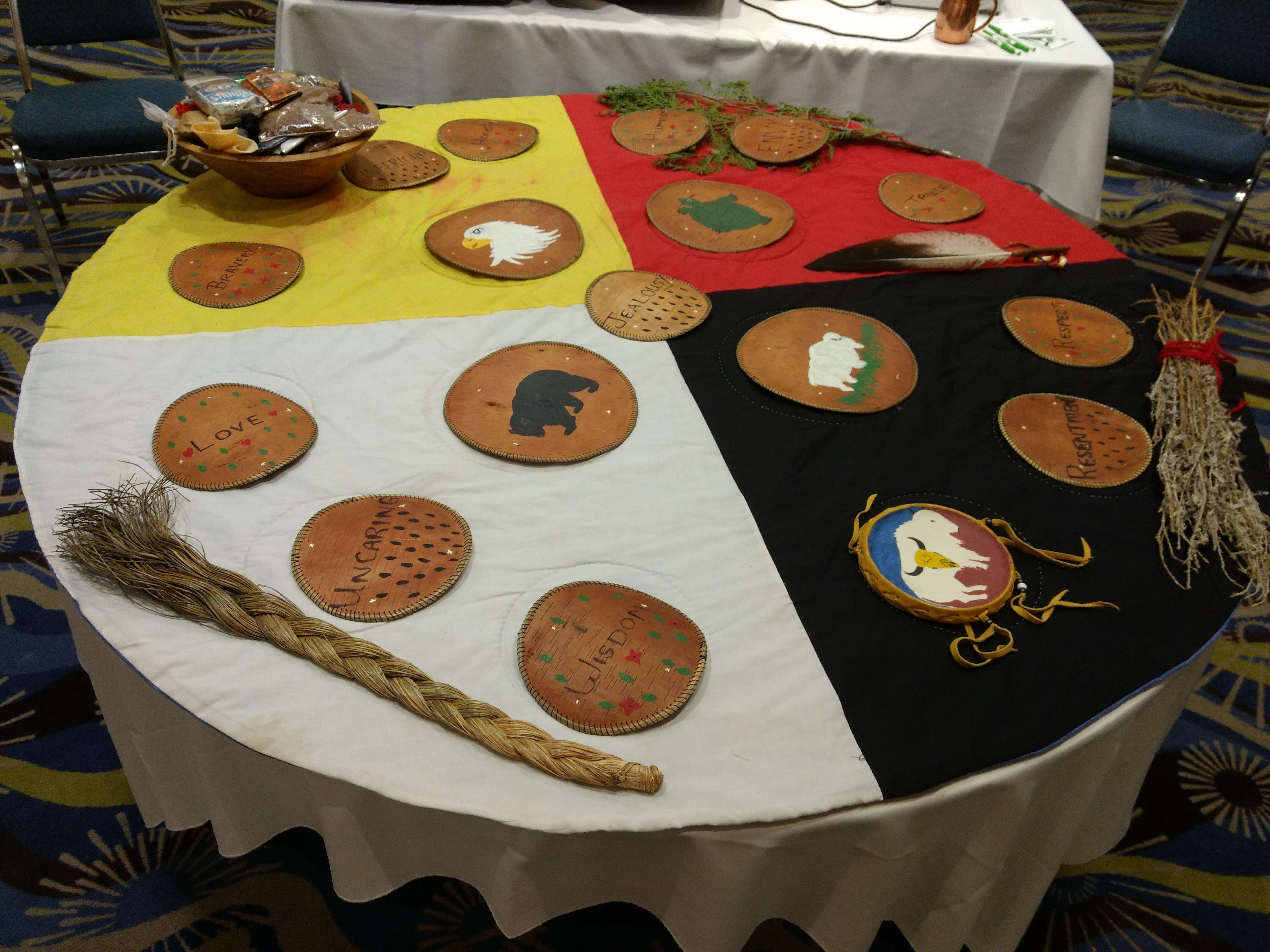
Medicine Wheel featured at Waabnoong Bemjiwang Child Well-Being Agency official project launch.
This month, the pre-designated Waabnoong Bemjiwang Child Well-Being Agency held an official project launch. As one of four pre-designated Indigenous Child and Family Well-Being Agencies, Waabnoong Bemjiwang will eventually provide child protection services to seven communities in the Sudbury, Nipissing and Parry Sound areas: Wasauksing, Shawanaga, Magnetawan, Henvey Inlet, Dokis, Nipissing and Wahnapitae First Nations.
Joanne Koehler, project manager for the Waabnoong Bemjiwang Child Well-Being Agency Development Project, explained the extensive consultation process that’s taken place since September of last year.
“We met with each First Nation community individually…all of the youth…and all of the elders,” Koehler said. “We looked for their feedback and what they would like to see in a First Nation Child Well-Being Agency.”
The non-Indigenous child welfare system has had—and continues to have—a devastating effect on Indigenous communities. It is clear Indigenous agencies serving Indigenous children and families is vital to move forward with Reconciliation.
“It’s pretty evident when we look at Canada as a whole, from the residential school system to the 60s Scoop—it really was genocide of First Nations people,” Koehler said.
Koehler stressed the importance of government and the child welfare sector delivering on the Truth and Reconciliation Commission’s action items. Government must also provide adequate funding for Indigenous communities.
“We have fly-in communities that require more funding than our First Nations communities in urban centres,” Koehler explained. “We want to ensure we have culturally appropriate services in place, not just in prevention…but in the event that protection services have to occur, we need to be able to address that with a culturally respectful service. One where they can remain in their communities, as opposed to taking them off-reserve and putting them in non-native homes.”
There are currently two non-Indigenous Children’s Aid Societies—Children’s Aid Society of the District of Nipissing and Parry Sound and the Children’s Aid Society of the Districts of Sudbury and Manitoulin—who serve these communities. Waabnoong Bemjiwang is actively working with both to facilitate the transition of services. The goal is to be a fully designated child welfare agency in three years.
Child welfare professionals from non-Indigenous agencies—from front line staff to executive directors—need to understand the importance of restoring the jurisdiction of services to Indigenous child welfare agencies, explained Koehler.
“Agencies can look at it like, our numbers are going to change, we’re losing staff,” Koehler said. “But it’s not about diminishing the number of children’s aid employees across the province of Ontario. It’s about diminishing the number of First Nations children in care. And the only way to do that is to have our own people deliver the services.”